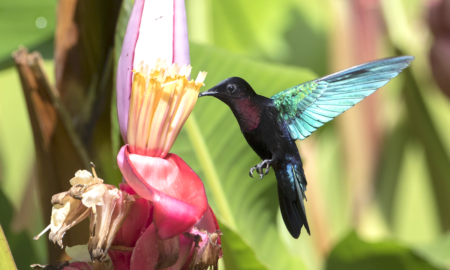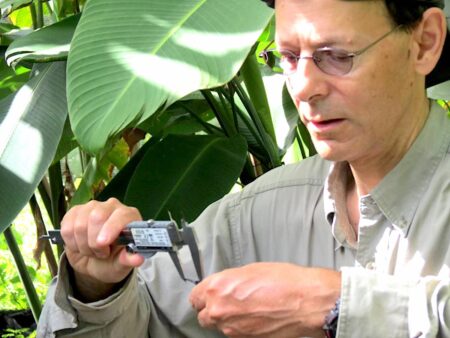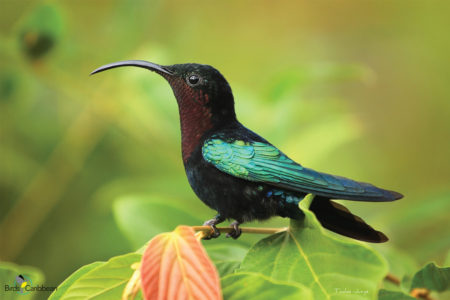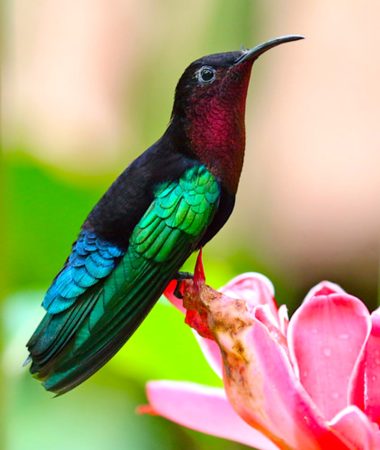
Being one of only two Eulampis species (a genus endemic to the Caribbean), the Purple-throated Carib adds endemic sparkle to the rainforest and cloud forest habitats of the Lesser Antilles. This large (it’s the largest hummingbird in the Caribbean!), brilliantly plumaged hummingbird is also closely associated with two species of native heliconia.
The Purple-throated Carib will visit feeders and cultivated landscape plants for a sweet drink of nectar, making it a familiar and quite spectacular sight for many in the Lesser Antilles. However, the Carib’s Birds of the World (BOW) account, which was previously just a short article last revised in 2018, provided only basic information which did not reflect the present state of scholarship and knowledge of the species.
Enter Dr. Ethan Temeles
A biology professor at Amherst College (MA, USA), Dr. Temeles has spent 8 field seasons in St. Lucia, and 17 field seasons in Dominica researching the Purple-throated Carib, making him the perfect candidate to revise and update its species account for Birds of the World. He connected with BirdsCaribbean staff at the American Ornithological Society/BirdsCaribbean conference held in Puerto Rico in 2022, and learned of the opportunity to contribute as an author for Birds of the World.
Dr Temeles eagerly took on the work of updating the species account with the latest science—including much of his own original research from 20 years of field work! He used the opportunity of lighter academic duties in the summer to synthesize his own and others’ work on the species.
Plumage Particulars, Population Data…and Partitioning of Flower Resources!
Thanks to the passionate work of Dr Temeles and his collaborators, the account has been greatly enriched in this 2024 update. It now includes detailed information about plumages, diet, and intriguingly, the sexual partitioning of flower resources. Dr Temeles also discusses the impact of Hurricane Maria (a deadly Category 5 hurricane that devastated 17 Caribbean islands in 2017) and other conservation concerns for the species. If you are from the Caribbean, learn how you can access all the scholarly resources on Birds of the World for FREE here.
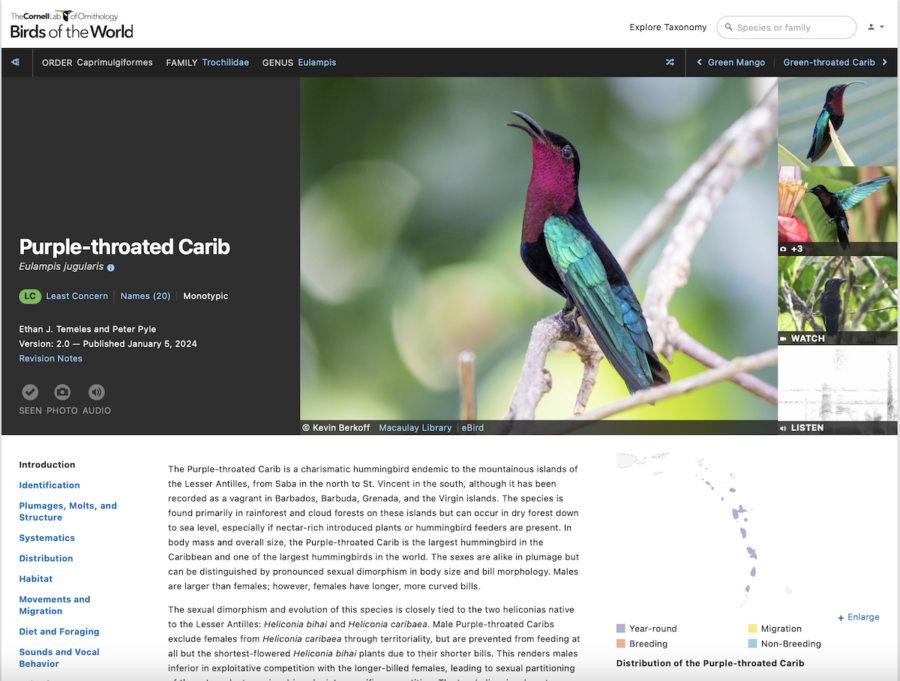
Editors at Birds of the World worked with Dr. Temeles and Macaulay Library resources to add a wide variety of photographs to the account—including many that will help with field identification. Even at a sizable five inches long, without perfect lighting the species often appears completely black except for its dazzling emerald green wings. Photographs of the Carib’s microhabitats, as well as videos and photographs showing its foraging behavior, are now also newly linked to the species account, demonstrating the powerful nature of integrating the Cornell Lab of Ornithology’s online resources.
Dr. Temeles is still teaching biology and environmental studies classes at Amherst, and took a break from grading Intro Biology exams to finalize the publication. He enthused, ”I’m delighted to share my 20+ years of field work on this species with readers of Birds of the World, and hope that others will be inspired to study and answer some of the questions for future research presented in this account of a truly spectacular hummingbird.”
Of his experience as an author he added, “Working with the Birds of the World and BirdsCaribbean staff was great and their editorial expertise was amazing.”
Journal of Caribbean Ornithology staff Caroline Pott and Zoya Buckmire provided editorial support.
Visit this page to access our free Purple-throated Carib coloring page and other educational activities.
Do you work with a Caribbean bird species, or are you interested in contributing to a Caribbean species account? We are always on the lookout for authors! Find out more or contact Caroline Pott (carolinepott@birdscaribbean.org) for more information regarding a species of interest.
The BirdsCaribbean-Cornell Lab of Ornithology partnership that produced this updated account also provides Birds of the World access for FREE to Caribbean-based IP addresses!

